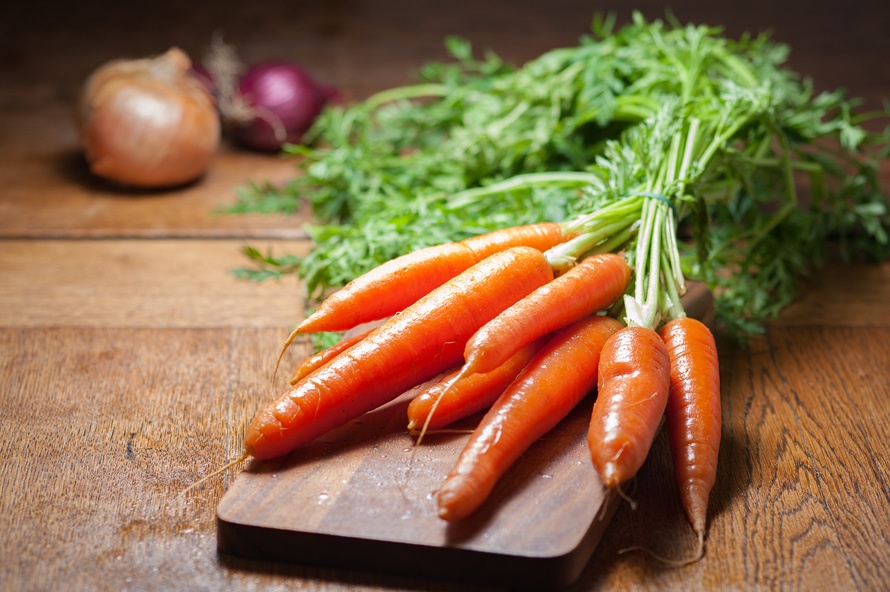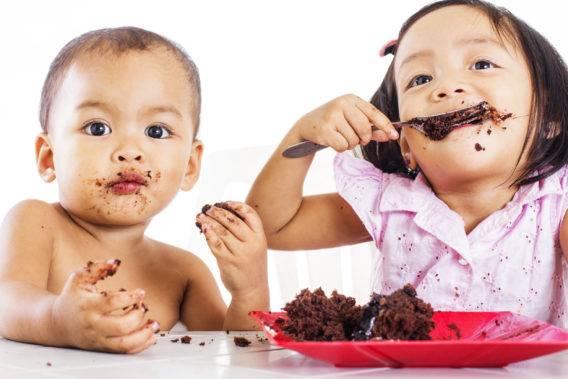
Children are more interested in food when they get to take part in the sowing, growing, harvesting and cooking.
For thousands of years, humans have hunted, gathered and grown our food. Even our grandparents learned about where food came from when they were children, how to prepare food and how to cook it (lots of food was home grown during the Second World War in the UK too due to shortages). It was a huge part of their learning. In developed countries today we are very removed from the food chain and where food comes from. Children might be more likely to have a pretend tea party with plastic food than grow and cook food with their mum and dad.
In many developed countries our meat is packaged into cellophane covered squares, and our food is often delivered to our house pre-prepared or frozen. However, that doesn’t mean that it is impossible for our children to begin to understand what food is and how it is grown and cooked. Children delight in learning about what grown-ups do all day and food can and should be quite central to this experience.
If you try to eat more seasonally, your child will also begin to understand that different foods come at different times. She can begin to learn about which foods are available at different times of the year and where in the world her favourite foods come from. There are many good videos suitable for children about how food is farmed.
Even with a window sill, you can teach your toddler about growing plants that they can eat. Simple things to grow include:
Growing food is a real test of delayed gratification where a child begins to understand that they have to nurture and wait for the prize – the harvest. Your child will be so excited with their first berries that they might even present you with one!
If you have space, or access to a Council Allotment, you can grow some fun and easy plants like squashes, tomatoes, carrots, and potatoes. It is like a treasure hunt harvesting potatoes when you pull up the plant to reveal all these yellow little jewels that have been growing underground. Potatoes can be grown in buckets or special bags if you don’t have a garden.

Cooking and baking with your child is not for the faint-hearted, and you may want to instil good hand washing and food hygiene habits if you are going to be expected to eat the salad your child has made while picking her nose!
This aside, it’s easy to let your child participate in cooking and preparing food – she will enjoy stirring, spooning, sieving and sprinkling. She can have a go at cutting up soft things like cheese with a blunt child’s knife, although watching her butter toast takes a very zen attitude!
The earlier you can teach your child about the joy of cooking and preparing healthy food the better you are setting her up to have vital cooking skills that mean she won’t need to rely on buying ready meals later on in life. This applies equally to boys of course.
One of the many reasons for the obesity epidemic in developed countries is a lack of knowledge about simple cooking techniques. If you feel that you know nothing about food and cooking, try to learn alongside your child. Learning to cook food from scratch is a vital skill, in providing you and your children with nutritious food. Even if you start out with omelettes and baked potatoes, you will build your confidence quickly.
It can be tough if you don’t have a proper kitchen. Ideally, a heating ring and an oven allow you to make a full range of meals. Microwaves are limited but it is possible to steam and heat vegetables with them, but it’s not easy to, e.g., make sauces from scratch.
If you are struggling with basic equipment and food a great source of information is Jack Monroe who wrote the bestselling recipe book ‘A Girl Called Jack’ using the budget recipes that helped her and her child eat well when she was living in poverty.
Whatever your situation your child will get a lot out of learning about where the food she eats comes from.